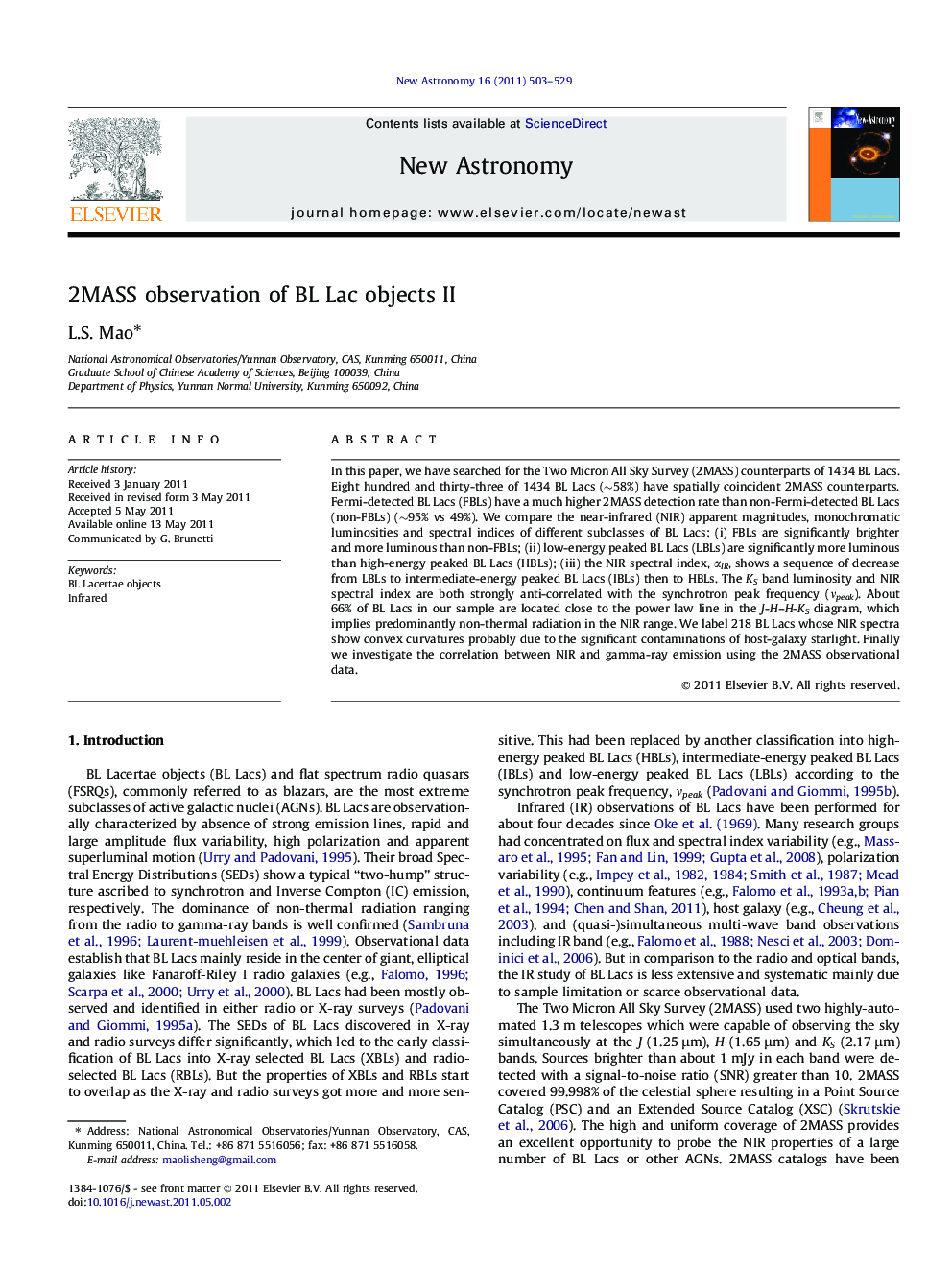| Article ID | Journal | Published Year | Pages | File Type |
|---|---|---|---|---|
| 1779326 | New Astronomy | 2011 | 27 Pages |
In this paper, we have searched for the Two Micron All Sky Survey (2MASS) counterparts of 1434 BL Lacs. Eight hundred and thirty-three of 1434 BL Lacs (∼58%) have spatially coincident 2MASS counterparts. Fermi-detected BL Lacs (FBLs) have a much higher 2MASS detection rate than non-Fermi-detected BL Lacs (non-FBLs) (∼95% vs 49%). We compare the near-infrared (NIR) apparent magnitudes, monochromatic luminosities and spectral indices of different subclasses of BL Lacs: (i) FBLs are significantly brighter and more luminous than non-FBLs; (ii) low-energy peaked BL Lacs (LBLs) are significantly more luminous than high-energy peaked BL Lacs (HBLs); (iii) the NIR spectral index, αIR, shows a sequence of decrease from LBLs to intermediate-energy peaked BL Lacs (IBLs) then to HBLs. The KS band luminosity and NIR spectral index are both strongly anti-correlated with the synchrotron peak frequency (νpeak). About 66% of BL Lacs in our sample are located close to the power law line in the J-H–H-KS diagram, which implies predominantly non-thermal radiation in the NIR range. We label 218 BL Lacs whose NIR spectra show convex curvatures probably due to the significant contaminations of host-galaxy starlight. Finally we investigate the correlation between NIR and gamma-ray emission using the 2MASS observational data.
